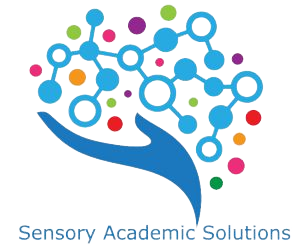Speech-Language Therapy
Language is our most human characteristic. It is essential to learning, working, and enjoying family life and friendships. There are many ways to express language. Speaking, using sign language, writing, and using computerized communication devices are some of the most common ones. The professionals who are educated to assess speech and language development and to treat language and speech disorders are speech-language pathologists (sometimes informally referred to as speech therapists). Speech-language pathologists can also help people with swallowing disorders. *Taken from American Speech-Language-Hearing Association.
WHAT IS SPEECH-LANGUAGE THERAPY?
Speech disorders include the following problems, according to Diane Paul-Brown, PhD, director of clinical issues in speech-language pathology at the American Speech-Language-Hearing Association (ASHA):
Articulation disorders include difficulties producing sounds in syllables or saying words incorrectly to the point that other people can’t understand what’s being said.
Fluency disorders include problems such as stuttering , the condition in which the flow of speech is interrupted by abnormal stoppages, repetitions (st-st-stuttering), or prolonging sounds and syllables (ssssstuttering).
Resonance or voice disorders include problems with the pitch, volume, or quality of a child’s voice that distract listeners from what’s being said. These types of disorders may also cause pain or discomfort for the child when speaking.
Language disorders can be either receptive or expressive.
Receptive disorders refer to difficulties understanding or processing language.
Expressive disorders include difficulty putting words together, limited vocabulary, or inability to use language in a socially appropriate way.
Benefits of Speech-Language Therapy
Speech-language pathologists assess individuals and create a plan of care based on the individual strengths and weaknesses. Treatment goals should focus on an individual’s needs. Treatment can be play based or instructional and should be motivating to the child. Everything should be individualized to the person. For instance if a child is demonstrating a receptive language disorder with specific deficits in the area of spatial concepts, treatment would include activities where the child can put things in, out, on, over, under, and through. If a child has oral sensory-motor deficits or feeding-swallowing deficits, direct stimulation of the oral and pharyngeal muscles may be indicated.
Increased independence with communication- receptive and expressive.
Increased cognitive skills.
Increased academic preparedness and success in the classroom.
Increased nutritional status.
Increased ability to orally feed safely and take an age appropriate diet.
Who can benefit?
Children require speech-language therapy for a variety of reasons; the following conditions may need speech or language therapy
Hearing impairment
Cognitive (Intellectual; Thinking) or Other Developmental Delays
Weak Oral Muscles
Birth Defects such as Cleft Lip or Cleft Palate
Autism
Motor planning problems
Respiratory Problems (Breathing Disorders)
Swallowing Disorders
WHO CAN BENEFIT?
Children require speech-language therapy for a variety of reasons; the following conditions may need speech or language therapy
Hearing impairment
Cognitive (Intellectual; Thinking) or Other Developmental Delays
Weak Oral Muscles
Birth Defects such as Cleft Lip or Cleft Palate
Autism
Motor planning problems
Respiratory Problems (Breathing Disorders)
Swallowing Disorders

Our speech therapist with a student ordering ice cream in the community with his AAC (Augmentative and Alternative Communication) device.
